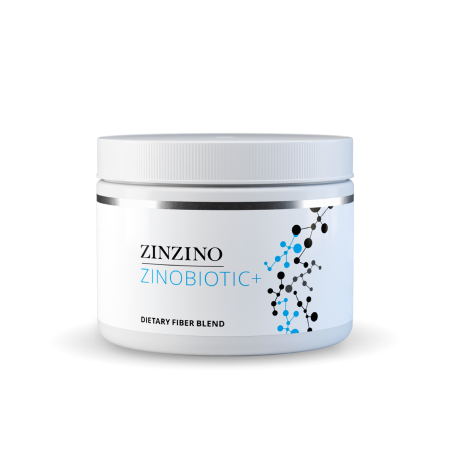What are beta-glucans and how do they improve gut health?

This is a fancy term for a type of soluble fiber. It consists of sugar molecules (polysaccharides) naturally housed in the cell walls of bacteria, fungi, yeasts, algae, lichens and plants. Oats are high in beta glucan-containing fiber, and you will also find high counts of it in wheat, wholegrains, seaweed, algae and shiitake mushrooms. Beta-glucans are praised for their string of health benefits, from gut support to immunity. It’s why beta-glucans are introduced into food supplements. The body doesn’t produce beta-glucans, either.
The health benefits of beta-glucans
Soluble fibers, like beta-glucans, break down easily as they pass through the gastrointestinal tract and dissolve into a gel-like substance in the gut. This essentially slows down the transit of food and supports slower digestion, resulting in better absorption which helps produce steady, balanced blood sugar levels. This process is different from insoluble fiber, which remains whole as it travels.
Beta-glucan supplements and more fiber in the diet
Mushrooms are a wonderful source of beta-glucan. Look out for these variations: Shiitake, Maitake, Reishi, Turkey tail, Oyster, Splitgill, and Enoki. But you don’t have to fill every plate with these nutrient-rich fungi to enjoy the incredible health benefits of beta-glucans.
When it comes to fibers, as a society, we’re just not consuming enough of it. We should aim for a total intake of 30 grams per day and in fact, records show we’re only meeting half of this daily count. For digestive health and overall wellbeing, it’s important we understand our fiber intake and adopt ways to introduce beta-glucans into our diet.
The ZinoBiotic+ all-natural dietary high-fiber1 blend is one such example. It features oat-derived beta-glucans, inulin and FOS from chicory root, psyllium husk, guar gum fiber from Indian guar beans, and resistant starch from corn, green banana, and potatoes. Designed to support gut health, balance cholesterol2 and microbiome, aid bowel functions3, and reduce that post-meal blood sugar spike4.
Eight fibers (unlike most products on the market) move through the body and ferment in the colon, ‘feeding’ the good bacteria, enabling them to outgrow the less desirable. This fiber mix also helps to satiate and reduce feelings of bloating. While the ZinoBiotic+ is a fiber blend supplement, it has positive effects on the whole body, from head to toe.
* These statements have not been evaluated by the Food and Drug Administration. This product is not intended to diagnose, treat, cure, or prevent any disease.
1. Az állítás, amely szerint egy adott élelmiszer rostban gazdag
Az állítás, amely szerint egy adott élelmiszer rostban gazdag, valamint a fogyasztó számára vélhetően ugyanezzel a jelentéssel bíró bármely állítás csak akkor alkalmazható, ha a termék rosttartalma legalább 6 g/100 g vagy 3 g/100 kcal.
2. A béta-glükánok hozzájárulnak a vér normál koleszterinszintjének fenntartásához
A béta-glükánok hozzájárulnak a vér normál koleszterinszintjének fenntartásához. Ez az állítás csak olyan élelmiszer esetében alkalmazható, amely adagonként legalább 1 g, zabból, zabkorpából, árpából vagy árpakorpából vagy ezek keverékéből származó béta-glükánt tartalmaz. Ahhoz, hogy az állítást fel lehessen tüntetni, a fogyasztót tájékoztatni kell arról, hogy a kedvező hatás 3 g, zabból, zabkorpából, árpából vagy árpakorpából vagy ezek keverékéből származó béta-glükán napi bevitelével érhető el.
3. A zabrost fogyasztása hozzájárul a széklet mennyiségének növeléséhez
A zabrost fogyasztása hozzájárul a széklet mennyiségének növeléséhez. Az állítás csak olyan élelmiszer esetében alkalmazható, amely az 1924/2006/EK rendelet mellékletében felsorolt ÉLELMI ROSTBAN GAZDAG állítás szerint élelmi rostban gazdag.
4. Replacing digestible starches
Az étkezés emészthető keményítő-tartalmának helyettesítése emésztésnek ellenálló keményítővel hozzájárul az adott étkezés után bekövetkező vércukorszint-emelkedés csökkentéséhez. Az állítás csak olyan élelmiszer esetében alkalmazható, amelynek az emészthető keményítő-tartalmát olyan mértékben helyettesítették emésztésnek ellenálló keményítővel, hogy az összes keményítőtartalomnak legalább 14 %-a emésztésnek ellenálló keményítő legyen


Share this page
Or copy link